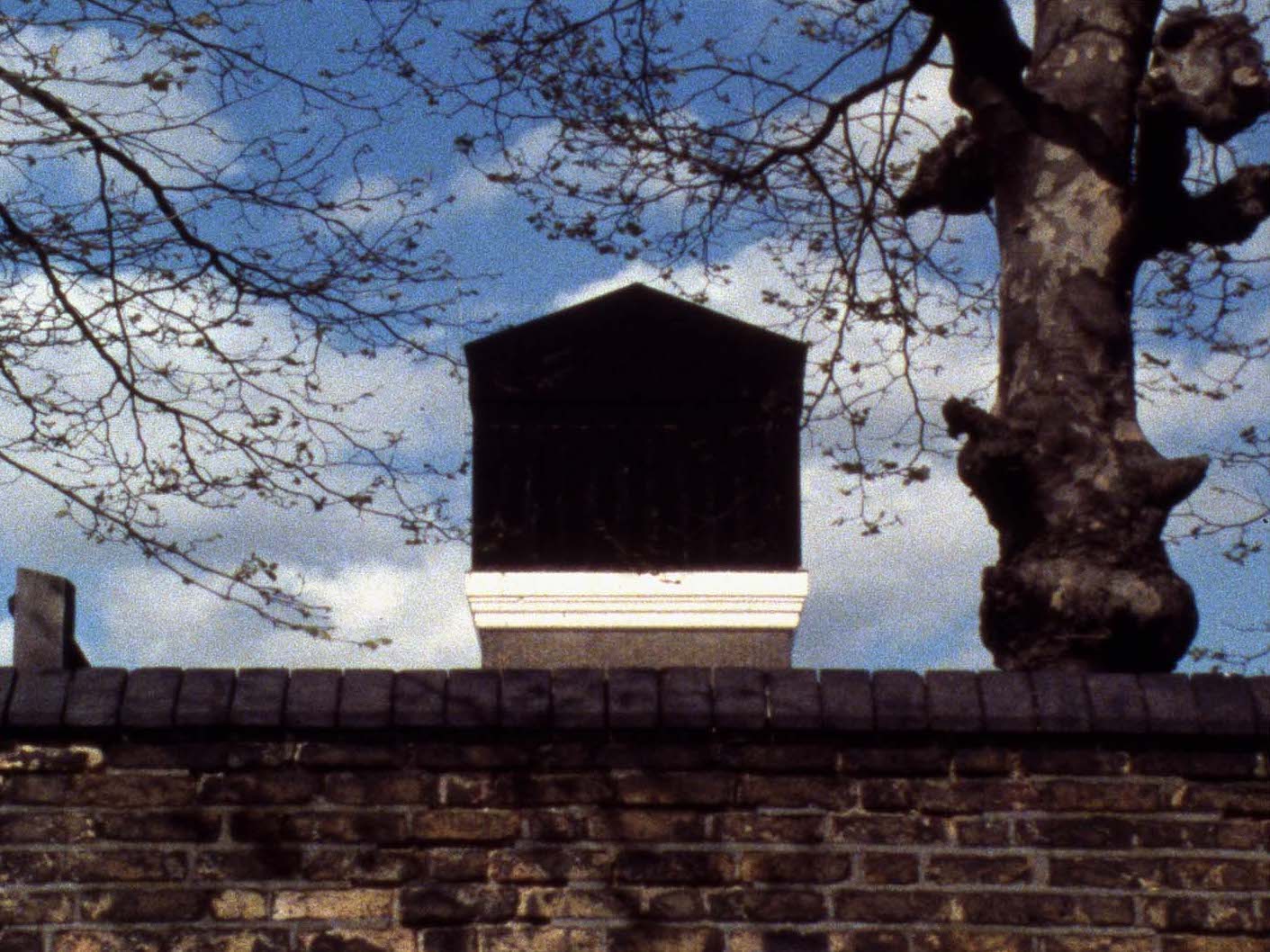Creeping horror: The weird and the eerie in The Black Tower and It Follows

Is there a difference between being stalked by the supernatural, and being haunted? A haunting affects a person but leaves traces external to them that are visible to others. The trouble with a demonic shadow is that is the lack of objective evidence and the suggestion that the creeping horror is not something happening to someone, but deliriously happening within them.
The horror of being followed, as something unique from being haunted, is something I explore through John Smith’s The Black Tower and David Robert Mitchell’s It Follows.
Half-weird, half-eerie
The Black Tower is a 22-minute short film from 1987. It’s on youtube and Mubi. After seeing it, I immediately had to check the glossary of Mark Fisher’s The Weird and The Eerie to make sure he hadn’t written about it (a good review is here). He would have loved it. The Black Tower chronicles the narrator’s increasingly spooky encounters across London with a black tower that only he can see, ending in insanity, recovery, and a voyage into the unknown. Its ending hints at a mythology like that of It Follows. It Follows is a fantastic 2014 horror movie, following a group of teens in version of suburban Detroit that exists almost out of time. In the film, a sexually transmitted demon stalks its victims, only visible to them, and takes the form of both strangers and those they know.
What’s so fun about both is that there is an additional layer of eerieness that’s more accessible to the audience than the subject. That layer is the idea that there is something More to the horror: that the black tower was not in the victim’s mind, but will stalk others, or that the demon must have an origin.
To be Fisherian, the tower and the demon are both weird and eerie. Like most hallucinations they are weird; something there that shouldn’t be. They are also eerie: when trying to explain it to others, they see nothing – there is nothing there when (to the witness) there should be. Their looming presence also forebodes something. In The Black Tower, the narrator dreams himself trapped inside it. The victim in It Follows (Maika Monroe) thinks she may be killed if the entity reaches her. Unlike the eerieness of a foreign intelligence, the eerieness of a hallucination is that the call may be coming from inside the house – where is my mind?
Within or without you
What’s great about the stalker in The Black Tower is that it is an architectural form in an urban setting. To those who can’t see it, it’s not necessarily absent. Instead, it’s forgotten, or unremarkable. In the film, a neighbor says she hadn’t noticed the tower. A shopkeeper confuses it for another tower. It’s not a ghoul; it’s anodyne. In It Follows, the stalker can look like anyone. Its only distinguishing feature is its invisibility.
A common refrain is that infrastructure is only visible if it breaks. Reality shares this relationship with horror. The horrors of modern London – demolished public housing, prisons, boarded up factories – become visible as the tower stalks the narrator in The Black Tower. Likewise, the demon of It Follows takes its victims on a tour of decaying Detroit. Perhaps this is what Zizek was talking about when he described horror as encountering The Real (apparently there’s a journal of Zizek studies). But these seem like a consequence of horror and not what makes something inherently skin-crawling.
What the black tower shares with the sexually transmitted demon of It Follows is that the horror is not embedded in the object itself, but is totally contextual and constructed. For people, it easy to hide in a crowd; for buildings, it is easy to hide in a skyline. It is menacing because it is weird, potentially imagined, and comically ubiquitous. Of course, they also both promise future horror. Smith’s narrator dreams of being trapped in the tower; Mitchell’s teens are aware the demon may kill them. These prefigurations motivate the characters to avoid their shadows, but aren’t really the source of spookiness.
This all goes to say that I think there’s another dimension to horror outside of Fisher’s weird/eerie split, which itself is kind of a reexamination of Freud’s notion of the uncanny (“unhomely”). The split I want to make is internal/external. It matters if the source of something’s eerieness or weirdness is in your own mind or shared. Horror is perceived in a social environment, and the relation between horror, its witness, and the environment in which it occurs matters. A schema:
| Eerie | Weird | |||
|---|---|---|---|---|
| External (perceived by others) |
Ghost towns | Ghosts, ghouls, and the like |
||
| Internal (within the mind) |
Premonitions | Hallucinations |
The horror of The Black Tower or the following It is that they occur in pedestrian, everyday environments and potentially in the mind of their victims. The consequence is that they more dramatically provoke a confrontation with “The Real” (whatever that means).